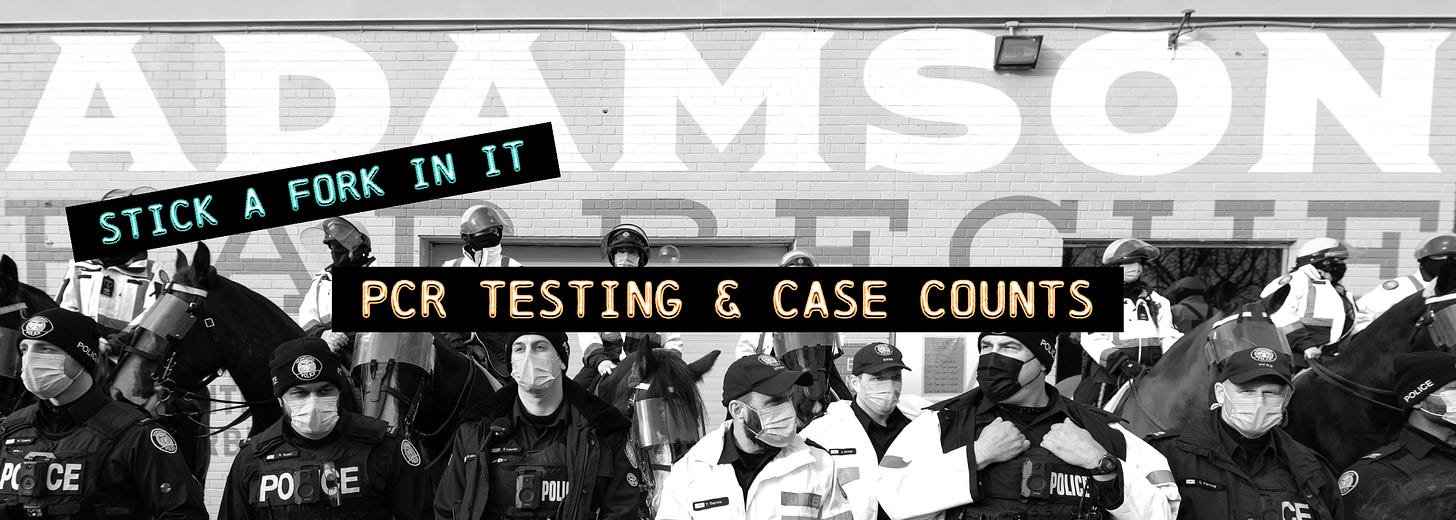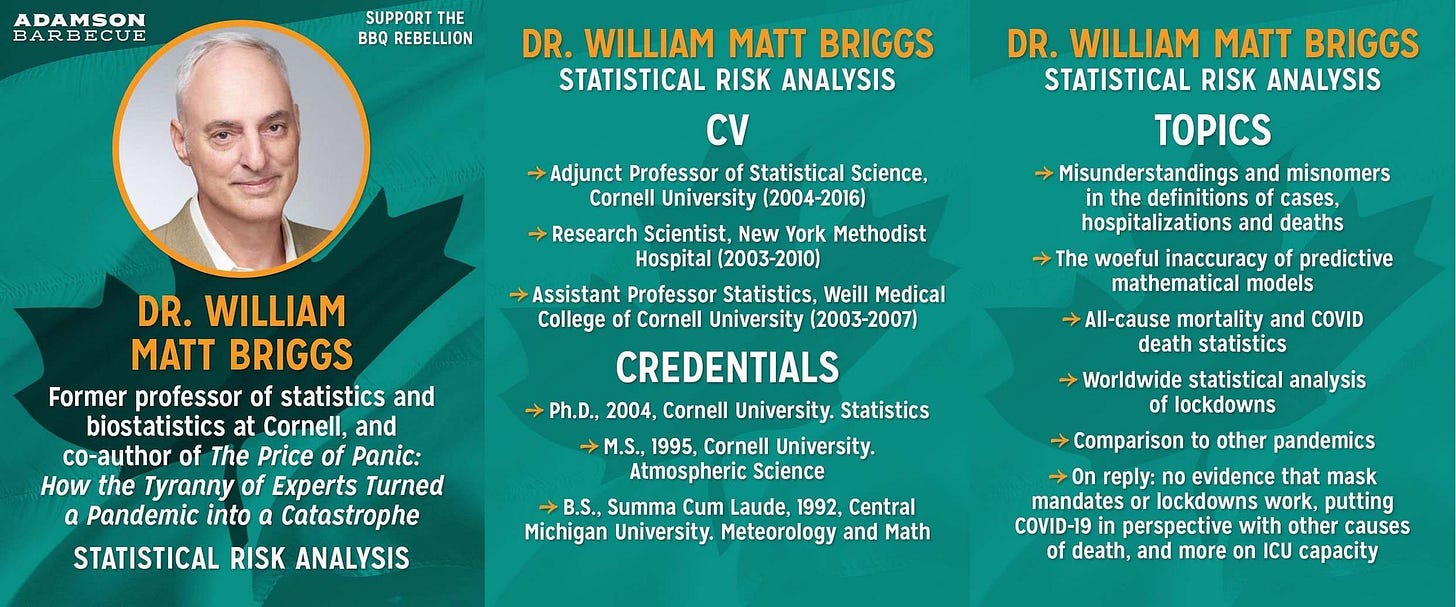Stick A Fork In It: PCR Testing & Case Counts
TL;DR - Case counts are a misleading indicator because PCR tests cannot reliably identify infectious disease
Expert witness Dr. Gilbert Berdine, a Harvard and MIT educated pulmonologist and Texas Tech professor, provided a critique of polymerase chain reaction (PCR) tests — the so-called ‘gold standard’ for detecting covid — in written testimony to the Ontario Superior Court on behalf the Barbecue Rebellion constitutional challenge. He said that “there is no specific symptom, sign, or laboratory test for COVID-19. There is no way to be certain that a patient has a diagnosis of COVID-19… Published figures for sensitivity and specificity of PCR testing for COVID-19 are guesses based on presumed true positives,” and because of this “the obsession over cases is misguided.”
Explaining why this was the case, in August 2020, Dr. Robert Brown, Professor Emeritus at the University of Waterloo wrote that “RT-PCR testing has been in use since the detection of the A (H5N1) influenza virus in 2005, but a serious limitation of RT-PCR testing is that nucleic acid detection is not capable of determining the difference between infective and noninfective viruses.”This was affirmed in a December 2022 study in the prominent science journal Nature, which mentioned that “no point-of-care diagnostic test currently exists to determine infectious SARS-CoV-2 in a patient sample.” Prior to covid, this had long been the position of the device’s Nobel Prize winning creator, Dr. Kary Mullis. Years ago, he explained how PCR tests “can find almost anything in anybody” because repeated amplification of samples increases the visibility of viral debris that are incapable of infection or transmission. Even if they could separate disease from debris, in August 2020, The New York Times acknowledged the inadequacy of the PCR testing regime, explaining how commonly used cycle thresholds were too sensitive and resulted in too many false positives to be a useful indicator. The article also addressed the economic and temporal disadvantages of PCR tests, but that’s a separate matter.
Testimony by another witness, Dr. William M. Briggs, a former professor of statistics and biostatistics at Cornell, said the implication of widespread PCR testing is that it “turns up marginal, slight, and asymptomatic infections, as well as false positives. Therefore, increased testing can give the impression the course of the disease is worse than it is.” Officials in Ontario confirmed this in July 2020, when the province’s Associate Chief Medical Officer of Health, Dr. Barbara Yaffe, explained that “if you’re testing in a population that doesn’t have very much covid, you’ll get false positives almost half the time… it will just complicate the picture.” Shortly thereafter, in October 2020, multiple Ontario public health units admitted to exaggerating covid death figures by including people who did not actually die of covid in their official totals, but it wasn’t until March 2022 when the province revealed that as many as 40% of deaths were wrongfully attributed. Importantly, in January 2022, Dr. Kieran Moore, Ontario’s Chief Medical Officer of Health, confessed that 45% of hospitalizations previously attributed to covid were not actually caused by covid, but were just incidental positive tests.
These admissions raise pertinent questions. If PCR tests were known not to be able to differentiate between infectious and non-infectious particles, why were results relied upon to inform policy? If it was known that PCR tests were unable to deliver accurate and timely data for the sake of tracking and tracing, why did public health continue reporting case counts? Additionally, if the role of media in democracy is to challenge official narratives, data, and methodology, to ensure transparency and accountability for the public, then why did they continuously broadcast “the numbers” without scrutiny or context? The alarming implication is that public health foolishly followed a misleading indicator, and our complicit media dutifully disseminated it, spreading misinformation that caused an anxious public to lose sleep, when they should have been counting sheep.
“Governments now propose that we test and trace all contacts of identified cases of disease. As we embark on this stage, we will find cases that would previously have gone unnoticed. Ironically, the better our testing capacity and the more we look, the more we will find, making it appear that disease is worsening, when it isn’t.”
– Doctors Neil Rau, Susan Richardson, Martha Fulford and Dominik Mertz. May 21, 2020.
This post is part of larger article called Stick A Fork In It: The Barbecue Rebellion & The Rude Awakening, which is available in its entirety on my Substack:






